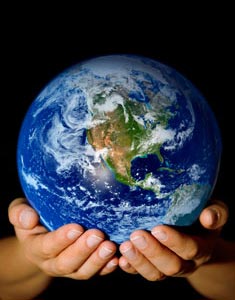A New Story
On a November morning, the sunrise can be spectacular, arousing a sense of awe. It’s rare to take in the beauty of the natural world and the environment designed and built by humans from the same vantage point. City dwellers may still enjoy seeing natural beauty during the day, but the bright lights have masked the visible stars of the night sky. Those living in less populated areas may still have that advantage.
A recent exhibit, Anthropocene, on display at both the National Gallery of Canada and the Art Gallery of Ontario, highlights what we humans have done to plunder and devastate our natural environment. This show is not the first to focus on this tragedy. More than thirty years ago, a Roman Catholic priest and cultural historian, Thomas Berry, expressed a need for a new story expanding on the one we find in the first chapter of the Book of Genesis. He reminds us that earlier theologians like Augustine and Thomas Aquinas placed equal importance on learning from the Book of Nature. What scientists now know about cosmology – the origin and nature of the universe - is astounding.
Berry inspired colleagues to present this story in an award-winning film called Journey of the Universe. Since its release in 2014, the film and accompanying book have caused responses from a variety of Christian communities supporting Berry’s argument of the need for reassessment. This challenge is both complicated and contentious. When Copernicus discovered that we were not the centre of the universe, his news was not well received. Nor were Darwin’s findings. Science has discovered that our milky way is only one among billions of galaxies. The writers of the early books of the Bible had a lesser sense of history and it was limited to a very small part of planet earth.
Journey and the first Genesis story share common elements. Both start in darkness. Light emerges, then water, then earth, then plants, then birds and animals and finally human beings. In the Genesis story, creation is complete and humans become the focus of history. In Journey, creation evolves in stages through billions of years and continues to do so.
At the recent consecration of our new bishop in the Diocese of Toronto, we acknowledged that we are settlers. What we celebrate less is indigenous peoples’ reverence for the earth - they see themselves as subjects alongside animals, vegetation and stars. In contrast, we live in a world where anything other than ourselves is viewed as an object for our use and exploitation. The last 65 billion years of the Cenozoic geological period were the earth’s most creative and flourishing. But in the last four hundred years we’ve managed to reverse the process of creative evolution - eliminating forests and species, polluting rivers and oceans, and robbing the earth of its resources. And even as we put humans at the centre, we are selective about which humans, preferring those nearest and dearest and most like ourselves.
Putting humans at the centre has a history and takes us back through 19th and 20th century industrialism and the earlier writings of Newton and Descartes, who proclaimed that everything that was not human was merely matter. But we can also go further back to the two biblical creation stories, noting that the redemption story, where the world is dangerous and tempting, has prevailed over the creation account. Within this context, we have taken the directive to have dominion over the earth and turned it into domination.
People of faith now have an opportunity to learn. Thomas Berry proposed more than 15 years ago that Christian and other religious communities can join with modern science communities to become part of a new Ecozoic era, where we return to intimacy with the earth and our place in the universe. When the earth itself becomes sacred to us, we recover both a sense of our miniscule presence as individuals – and at the same time, our sacred responsibility for it, owing to our gift of human consciousness. It means rethinking the frameworks of theology and its implications - for liturgies, formation, stewardship, laws, governance, and for the challenges of our time – climate change, technology and the threat of annihilation by nuclear war. Meanwhile we have obsessed about gender and sexuality – not expressing with gratitude the wonder of the cosmos and our proper place in it.
The first step is awareness. Go to see Anthropocene. Watch Journey of the Universe on YouTube. Visit the associated websites: www.journeyoftheuniverse.org and
www.theanthropocene.org. . You will experience the universe and our small planet in new ways. These are first steps that may lead to increased understanding and commitment.

